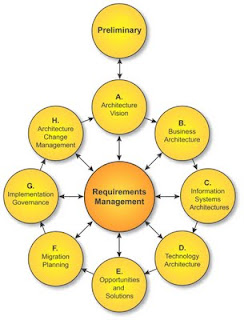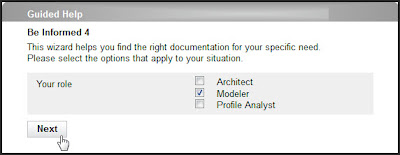Documentation 3.0
In my last blog I explained how we can distinguish three phases in the development of documentation. The first phase was a very product centric one, while in the second phase we see a more process driven approach. Re-use gets more and more important as is collaboration with other writers. But what about the users? How do they benefit from this move to single sourcing?
Sure, creating and translating documentation becomes cheaper and easier to manage, but having documentation in your own language is for most people normal and not seen as a usability feature. And then there is the issue with information overload.
Maybe we should ask our users what information they need, instead of just providing them with everything we want them to know.
To really help our users, we should move on from our process centric approach to a more customer-centric one.
A customer-centric approach
Documentation 3.0 is all about offering the right documentation at the right time. It is customer-centric, which means it delivers a personalized solution for each inidividual user and is based on their demands. We use the context situation of users - by getting information out of systems and databases and/or by asking them questions - and bridge the gap between the offered content and the context.
The documentation should also be flexible and adaptable to constant changes in both content and context. It uses multiple sources, with an increased focus on collaboration throughout the whole product life cycle. To do so it uses semantic technology as an add-on to content management systems and a knowledge-centered approach to documentation. Documentation 3.0 also changes the role of the technical communicator, offering new opportunities.
Semantic technology
Documentation 3.0 is like the Web 3.0 movement based on semantic technology. Semantic technology is the technology that enables us to move from providing information to providing knowledge. But what is knowledge and what is information?
Knowledge is the interpretation of information within its context. It makes it possible to act and react in a proper way and make decisions.
With semantic technology we are able to make the shift from being information providers to being knowledge suppliers and helping users take effective action.
Sure, creating and translating documentation becomes cheaper and easier to manage, but having documentation in your own language is for most people normal and not seen as a usability feature. And then there is the issue with information overload.
Maybe we should ask our users what information they need, instead of just providing them with everything we want them to know.
To really help our users, we should move on from our process centric approach to a more customer-centric one.
A customer-centric approach
Documentation 3.0 is all about offering the right documentation at the right time. It is customer-centric, which means it delivers a personalized solution for each inidividual user and is based on their demands. We use the context situation of users - by getting information out of systems and databases and/or by asking them questions - and bridge the gap between the offered content and the context.
The documentation should also be flexible and adaptable to constant changes in both content and context. It uses multiple sources, with an increased focus on collaboration throughout the whole product life cycle. To do so it uses semantic technology as an add-on to content management systems and a knowledge-centered approach to documentation. Documentation 3.0 also changes the role of the technical communicator, offering new opportunities.
Semantic technology
Documentation 3.0 is like the Web 3.0 movement based on semantic technology. Semantic technology is the technology that enables us to move from providing information to providing knowledge. But what is knowledge and what is information?
Knowledge is the interpretation of information within its context. It makes it possible to act and react in a proper way and make decisions.
With semantic technology we are able to make the shift from being information providers to being knowledge suppliers and helping users take effective action.


Comments